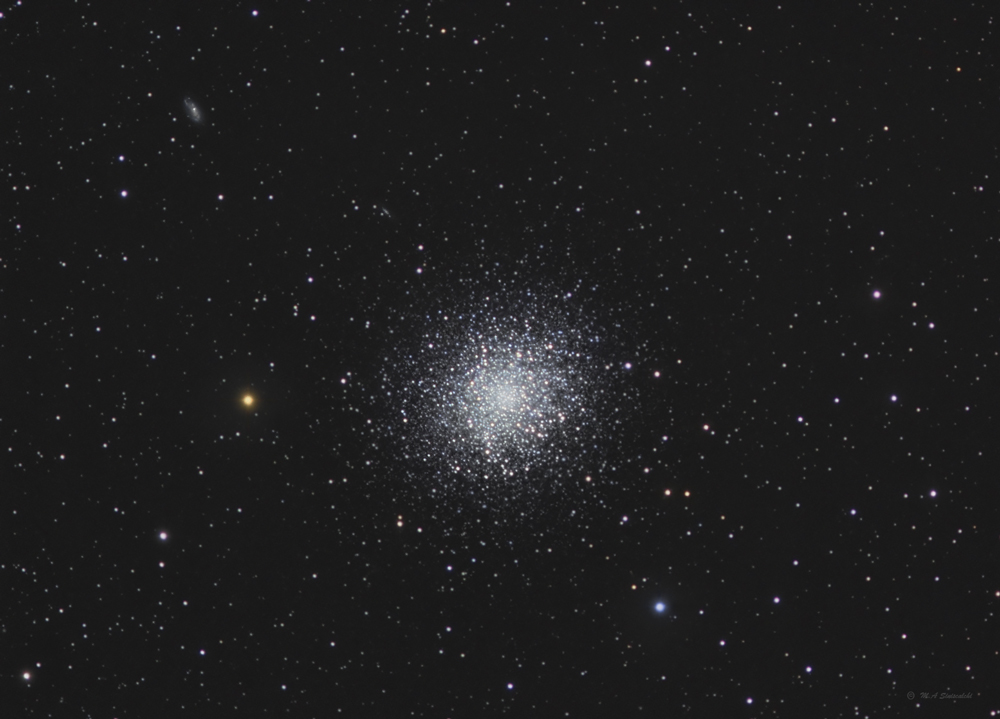© 2021 Michael A. Siniscalchi
Messier 13
Globular Cluster in Hercules
RA:16h 41m 20s Dec: +36° 19' 25" Distance - 22000 ly Size - 20 arc/min
Click on image for larger size
Location & Date
|
Backyard, Abbott Observatory- Long Island, NY, April 2021
|
Telescope
|
Orion ED80 F/7 ED, Moonlite focuser, Losmandy G11 Gemini
Image scale 2.54 arcsec/pixel
|
Camera
|
SBIG ST-2000XM
Baader L R G B filters
CCD temp -20°C
|
Exposures
|
Lum-28x10m & 28x5m Red-12x5m Green-12x5m Blue-12x5m Bin 1x1
|
Planning & Acquisition
|
Image planning - Sequence Generator Pro
Image acquisition - Sequence Generator Pro w/PinPoint & PHD2 (guiding)
|
Processing
|
CCDStack - calibration, align, normalize, combine, deconvolution, RGB color combine
Adobe Photoshop - L+RGB Color processing, Noise reduction, JPEG conversion
Topaz AI - selective sharpening
|
Wikipedia
M13 was discovered by Edmond Halley in 1714, and cataloged by Charles Messier on June 1, 1764 into his list of objects not to mistake for comets. Its diameter is about 23 arcminutes and it is readily viewable in small telescopes.
Nearby is NGC 6207, a 12th-magnitude edge-on galaxy that lies 28 arcminutes directly northeast. A small galaxy, IC 4617, lies halfway between NGC 6207 and M13, north-northeast of the large globular cluster's center.
About 145 light-years in diameter, M13 is composed of several hundred thousand stars, the brightest of which is a red giant, the variable star V11, also known as V1554 Herculis, with an apparent visual magnitude of 11.95.
M13 is 22,200–25,000 light-years away from Earth.
Single stars in this globular cluster were first resolved in 1779.Compared to the stars in the neighborhood of the Sun, the stars of the M13 population are more than a hundred times denser. They are so densely packed together that they sometimes collide and produce new stars.The newly formed, young stars, so-called "blue stragglers", are particularly interesting to astronomers.
